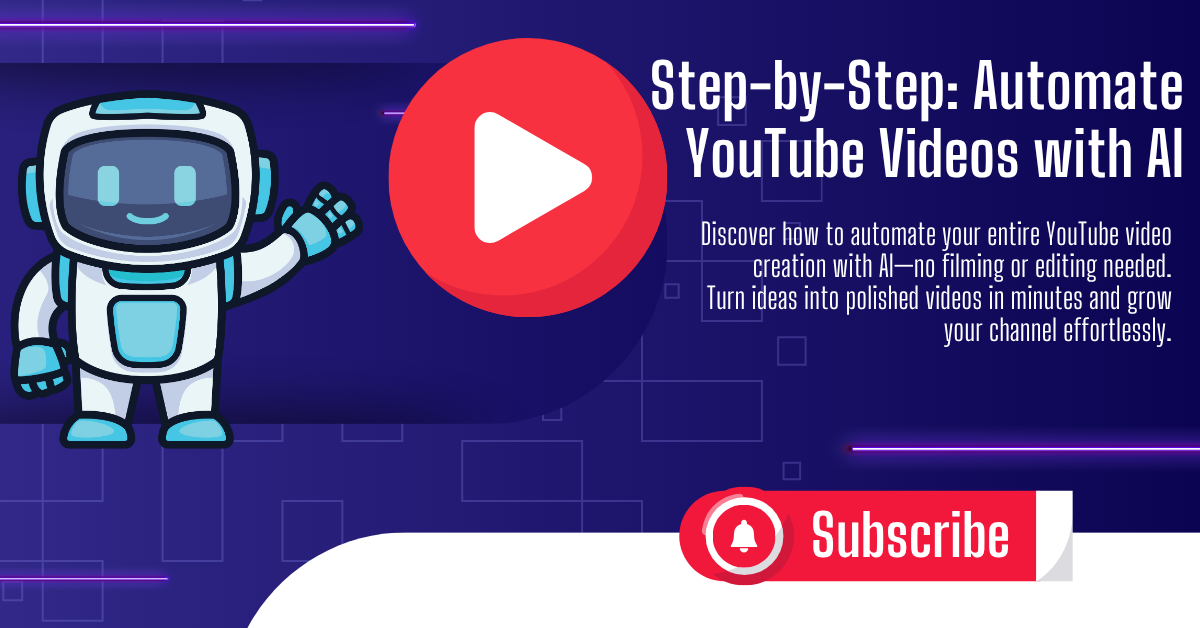Making videos for YouTube may take a lot of time. The whole process, from writing and editing to publishing, might feel overwhelming. But what if you could use AI to automate YouTube videos and save yourself hours of work each week?
This article will show you a straightforward, useful, step-by-step way to automate YouTube videos, from writing scripts to posting the completed films. By the conclusion, you’ll know how to make your video production more efficient, boost your output, and keep the quality high without becoming fatigued.
Step 1: Set Goals for Your Video
Before you start using tools or AI, ask yourself:
- What is the subject of your video?
- Who do you want to reach?
- What do you want others to do?
When you make your goals clear, AI can create material that fits with the aim of your channel. For instance, if your audience prefers brief courses, your AI-generated scripts should be concise and direct.
Tip: For each video, write a goal in one phrase. This one easy step will save you hours of editing later.
Step 2: Get Your Ideas to Automate YouTube Videos
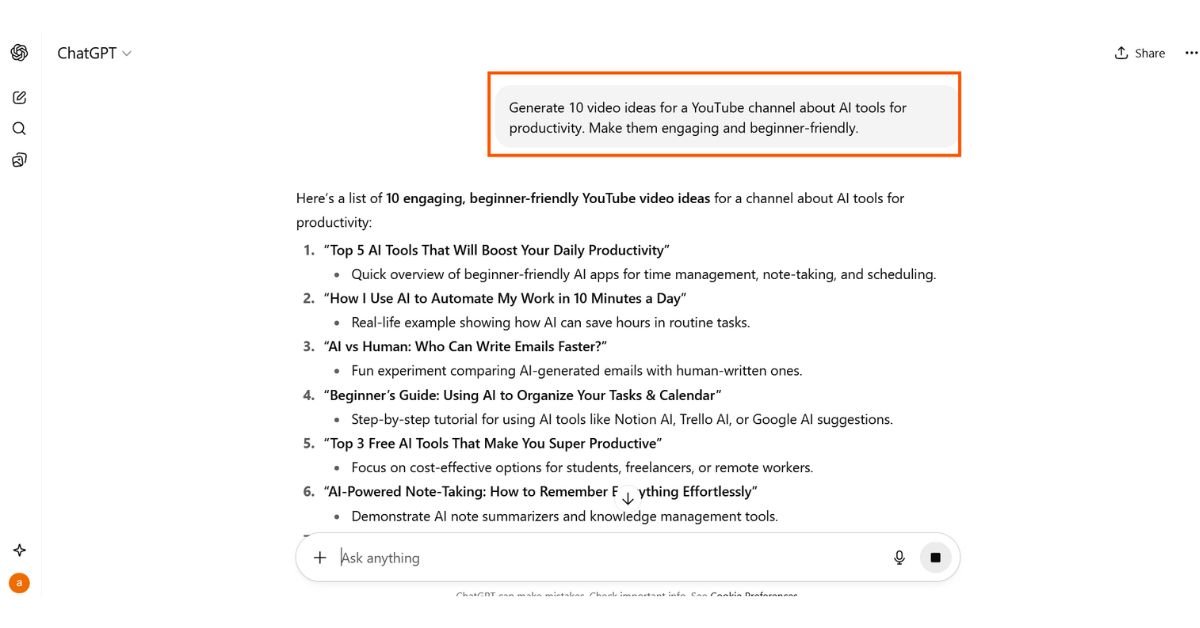
This screenshot shows how I asked ChatGPT to generate beginner-friendly video ideas for a YouTube channel focused on AI productivity tools. Using AI for brainstorming saves hours and ensures content is relevant and engaging. You can replicate this for any niche by customizing the prompt.
AI can help you come up with ideas for your videos. ChatGPT, Jasper, and Writesonic are several tools that may help you come up with hundreds of ideas in a short amount of time.
For instance, you might consider asking ChatGPT, “Could you provide 10 popular topics for a YouTube channel focused on tech tutorials?”
Please organize your ideas into a spreadsheet or a Trello board once you have them. This becomes your content schedule and makes sure that videos keep coming in, which is how you automate YouTube videos.
Warning: Don’t just make up subjects without checking that they are relevant and correct.
Step 3: Use AI to Write a Script to Automate YouTube Videos
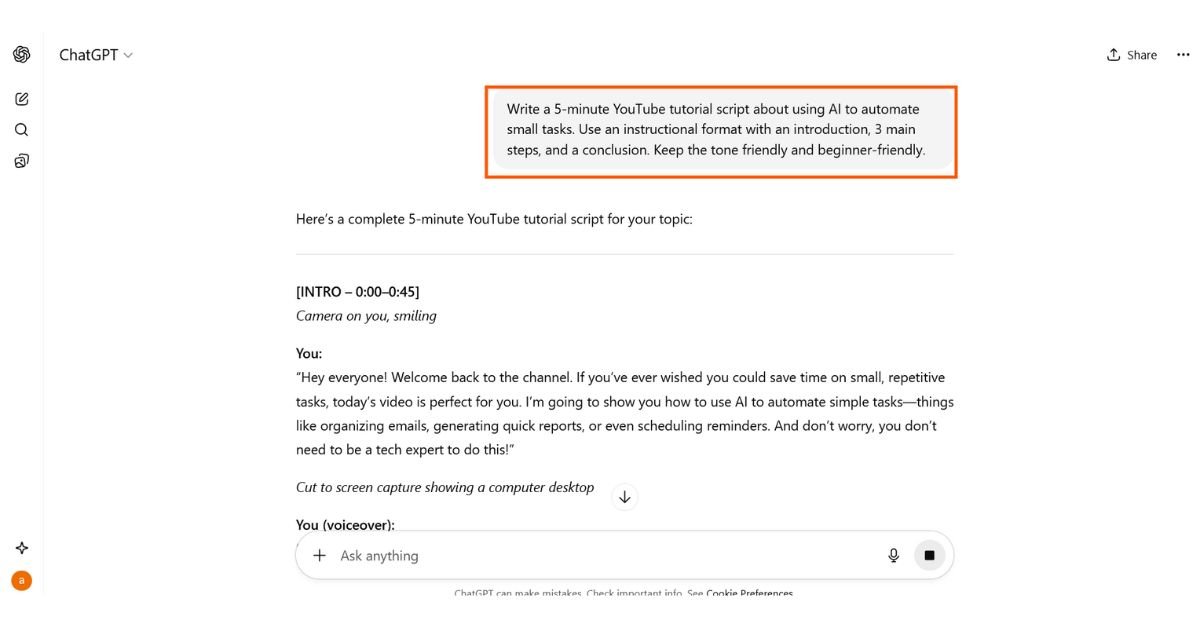
Here, I show a practical example of generating a video script with AI. The prompt creates a friendly, structured script including introduction, 3 main steps, and a conclusion. Always review AI-generated scripts to ensure your unique voice is preserved.
Every video needs a script. AI can help you build scripts that are clear and captivating in only a few minutes.
Step by Step:
- Put the subject of your video into an AI authoring tool.
- Choose the format: instructional, review, or explanation.
- Please instruct the AI to draft a script that includes an introduction, body, and conclusion.
- For example, “Write a friendly 5-minute YouTube tutorial script about using AI to automate small tasks.”
- Tip: Always read the script and change it to fit your voice. AI saves time, but being real is important.
Step 4: Make a Voiceover
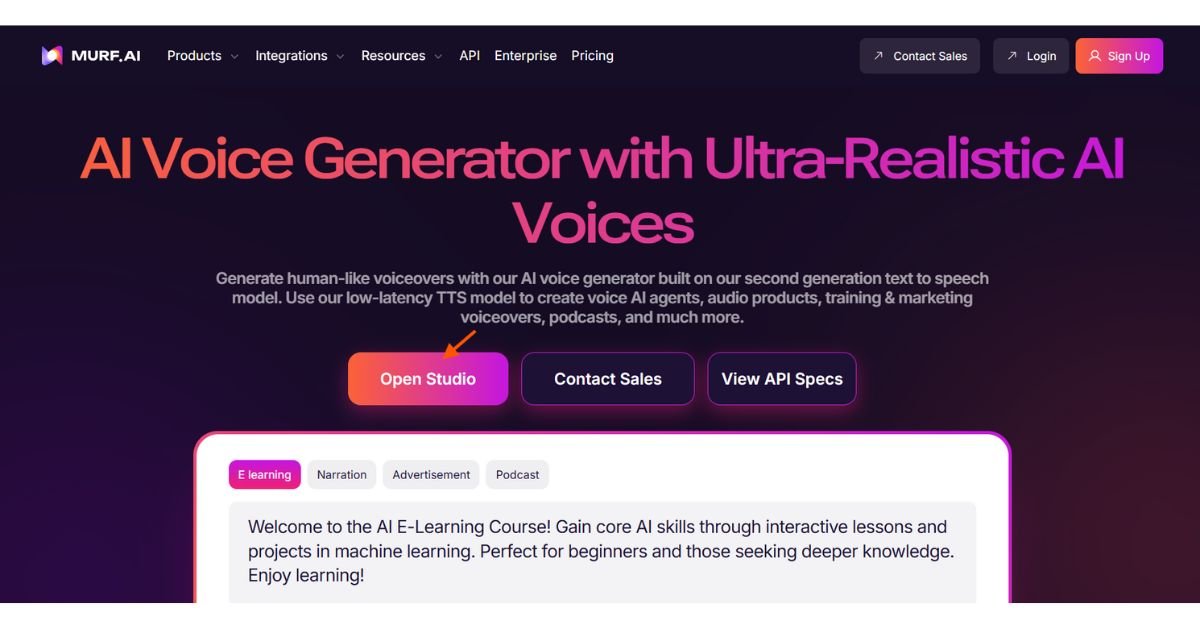
This screenshot demonstrates generating a realistic AI voiceover in Murf.ai. I selected an engaging voice, adjusted pacing, and exported the audio. AI voiceovers save time and give videos a professional touch without hiring narrators.
Once you have your screenplay, you may utilize AI voice generators to provide professional-sounding narration. Murf.ai, Play.ht, and WellSaid Labs are several tools that make voices sound authentic.
Steps:
- Please input your script into the voice generator.
- Choose the voice type that fits the tone of your channel.
- You may change the tempo, pitch, or pauses as desired.
- Send the audio file out.
- Shorter sentences are preferable for AI voices, which makes the narration sound more realistic.
Step 5: Make the Video Images to Automate YouTube Videos
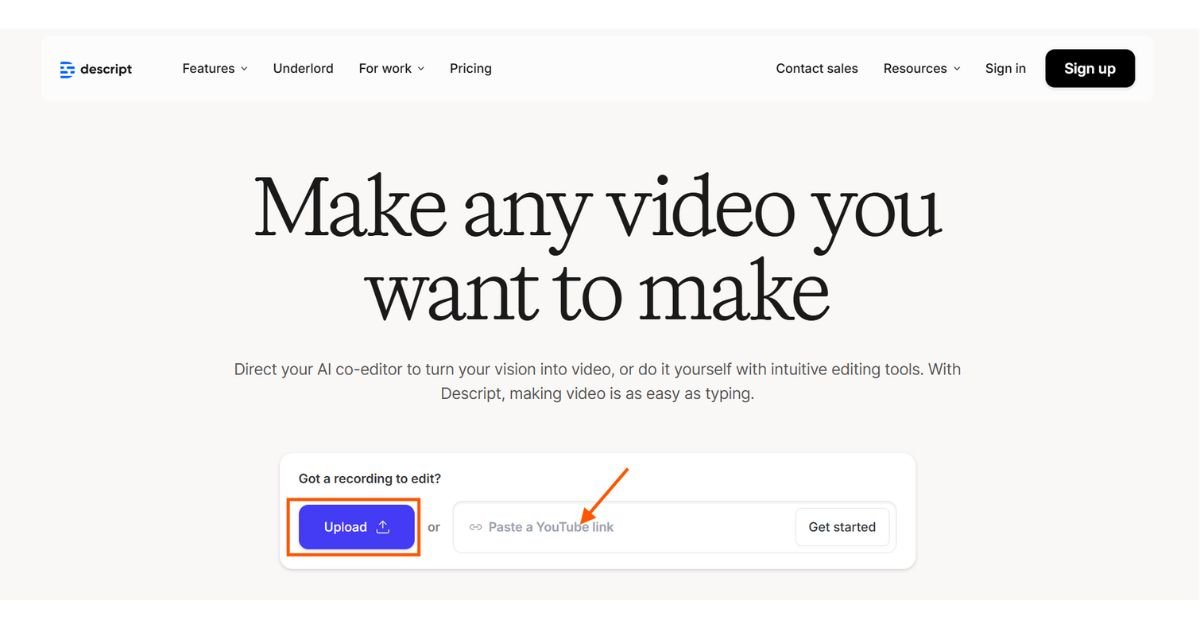
Descript lets you edit films the same way you edit text, by automatically getting rid of filler words and pauses. AI editing tools make the process easier so you can focus on delivering the tale instead of making boring cuts and transitions.
AI tools may now make pictures, animations, or stock videos on their own. This is when your video really starts to come to life.
Choices:
- Pictory.ai: Uses AI to turn texts into videos.
- Synthesia.io makes AI presenters for how-to videos.
- Canva: Uses AI to make video templates and animations.
For example, you may upload your AI script, pick some images, and the program can make a rough draft of your film in only a few minutes.
AI tools may now make pictures, animations, or stock videos on their own. For a full list of the best AI video generators you can use with ChatGPT prompts, check out 6 Best AI Video Generators to Easily Create Videos from ChatGPT Prompts, This is when your video really starts to come alive.
If you’re utilizing stock video, make sure to examine the graphics for copyright concerns.
Step 6: Use AI to edit the video.
Computer-generated videos frequently require minor adjustments. AI tools can help:
- Descript: Edit movies like you would edit written documents, and it will automatically get rid of filler words.
- Runway: AI-powered video editing for effects and transitions.
- Tip: Instead of over-editing, focus on cutting out pauses and improving the flow. This helps you maintain a quick workflow while ensuring quality.
Step 7: Optimize Tags, Titles, and Descriptions to Automate YouTube Videos
AI can help you create SEO-friendly titles, descriptions, and tags to boost views.
Some tools you may use are
- TubeBuddy: Gives you keyword ideas for tags and titles.
- ChatGPT: Makes video descriptions that naturally incorporate the terms you want.
Step-by-Step:
- Put the topic of your video in the AI tool.
- Please select 3 to 5 options for the title.
- Choose the one that is short, captivating, and easy to find.
- Make a summary of the video material that includes links or calls to action.
- Tip: Don’t stuff keywords. Put your attention on value and readability.
Step 8: Set up automatic uploads and scheduling.
Plan your uploads ahead of time to really automate your YouTube videos.
Tools:
- YouTube Studio: Scheduling is built in.
- Schedule sharing across platforms with Buffer or Hootsuite.
Step by Step:
- Make sure to export your video in the right format, such as MP4 or 1080p.
- Upload to the YouTube Studio.
- Put in a title, a description, tags, and a thumbnail.
- Set the date and time for publication.
- Tip: Try posting at different times to reach more people.
Step 9: Use AI to Make Thumbnails to Automate YouTube Videos
Thumbnails get people to click. AI technologies can produce professional designs in a matter of minutes.
Tools:
- Canva: AI-powered ideas for thumbnails.
- Remove.bg: Quickly removes backgrounds from custom photos.
Whenever possible, please consider using bright colors, large fonts, and faces. This is a good tip. AI can propose layouts, but changing them by hand frequently makes them work better.
Step 10: Monitor performance and make necessary adjustments.
Publishing is not the end of automation. Please review the performance metrics and make any necessary adjustments.
Important Numbers:
- Looks
- Time to watch
- Engagement (likes, comments, and shares)
Step by step:
- Look at YouTube Analytics once a week.
- Find the videos that do the best.
- Use AI to copy forms or subjects that have worked in the past.
- Tip: Be open to change; even small changes may have a large impact over time.
In conclusion
You can automate YouTube videos from idea to publication quickly by following these steps. AI can help you save hours of boring labor so you can focus on being creative and making plans.
Keep in mind that AI is only a tool and not a way to replace your voice. Look at your work, add your touches, and try out other styles. Start small, follow these steps, and see how automation changes the way you operate on YouTube.
It’s your time now. Choose one video and follow these procedures to discover how much time you save. Share your questions or experiences with the group; you’ll all learn quicker!
Disclaimer: The tools and screenshots shown in this guide are for illustrative purposes. Results may vary depending on updates to the AI tools. Always verify scripts, visuals, and AI outputs for accuracy and originality before publishing.
Note: Screenshots taken from Murf.ai, Pictory.ai, Descript, and ChatGPT.
Last updated on August 31, 2025

Hi, I’m Amarender Akupathni — founder of Amrtech Insights and a tech enthusiast passionate about AI and innovation. With 10+ years in science and R&D, I simplify complex technologies to help others stay ahead in the digital era.
